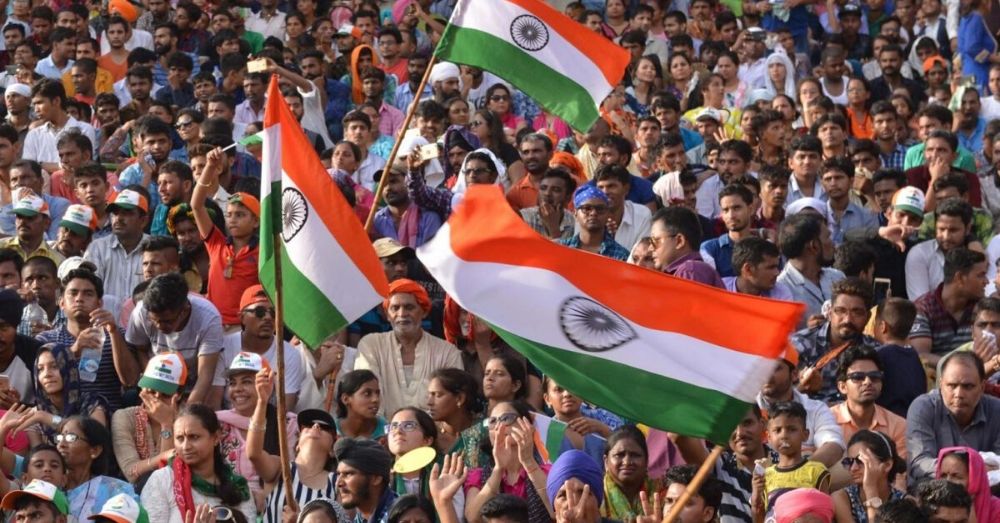The penchant for ‘regionalizing’ historical figures is a blemish on the ‘broader national outlook’ that we take great pains, and pretence, to display

From the moment plans were conceived to align regions according to the languages spoken, a grand folly was about to be carried out. Today, the formation of States that would constitute the Indian Union on the basis of linguistic affiliations appears to have been the greatest blunder in Indian history.
Accounts of the ancient past have shown that the Indian subcontinent was a perennial saga of disorganized alliances; a sordid tale of treachery and mistrust.
A united front was never its forte! No wonder the foreign invaders found the disjointed factions an easy conquest. Exploiting this weakness, the colonial marauders were able to establish a long rule here with their ‘divide and rule’ policies.
However, having earned our freedom on the strength of the collective efforts of the selfless sons of the soil who rose above all considerations of caste, creed and religion, we continue to wallow in pitiable conditions.
India is a land of diverse cultures, religions and communities, a mélange of customary traditions, flavour, etiquettes and lifestyle. The diversity is clearly reflected in a variety of traditions being followed. The same festival is celebrated in various hues associating different suggestions according to the topography of the region; every cuisine has a distinctive flavour.
The great ‘Indian divide’, the north and south that is, has thrown up some strange equations. The distaste for Hindi as exhibited raucously by the Tamilians has been as debasing as the attitude of the Kashmiris who not long back believed they were a separate state within the country.
Imagine the Chief Minister of the state vehemently opposing plans to have a flag-hoisting - an Indian flag mind you - at the Lal Chowk in Srinagar by the BJP on the Republic Day way back in 2011 fearing that it would ‘hamper’ the peace in the valley and scuttle the peace process after months of civil unrest there!
“What’s the need for individuals to hoist flags,” the CM had retorted then! The national flag, I say! “Every free nation of the world has its own flag; it is a symbol of a free country.”
Moreover, “the Indian national flag represents the hopes and aspirations of the people of India; a symbol of our national pride.”
Kashmir had a legislation which discouraged the sale of landed property in the state to anyone other than a Kashmiri. Outsiders could not settle there! Following the Accession of Jammu and Kashmir to India in 1947, a special status was then accorded to the state through Article 370 incorporated in the Indian Constitution.
The abrogation of Article 370 changed all that! The very fact that till the year 2019, Article 370 was “the only legal window through which the Republic of India maintained its territorial link with J&K and extended its jurisdiction to the State,” had the issue of ‘special status’ much in debate.
Playing on the regional feelings of the people, jingoism has been fanned aflame in many parts of the country. Bifurcation of the existing states to appease provincial provocateurs has altered the very map of a united India.
Overriding proposals for a united Andhra Pradesh, the Telangana protests that took place between the years 2004-2010 is a vivid example of an assertive demand for a separate state.
Likewise, opportunistic overtures of a few regional politicians have had Maharashtra in a state of turmoil intermittently. Fermenting xenophobic emotions, some time back, they were able to build up public anger against north Indians, especially the Biharis and those from UP, for depriving the locals of jobs and other means of livelihood.
How could the concept of ‘an outsider’ be applied to an Indian from any state residing in another! Isn’t India a free country? Since when have we ‘imposed passports’ for Indians to travel the length and breadth of the country, and settle at any place of their choice?
Flaunting our secular credentials, we have had a harmonious relationship between Hindus, Muslims, Sikhs, Christians, Jains, Buddhists, Parsis, and those subscribing to various other religious orders in the country.
But of late, the communal cauldron has started boiling over with disastrous results. Various religious orders have suddenly found the need to safeguard their dogmas and principles. Many staunch believers owing allegiance to various religious faiths under the impression that the sanctity of their sacred beliefs has been encroached upon, find the need to retaliate aggressively. This then is the gist of religious extremism!
‘Unity in diversity’ is one of the most powerful thoughts that India has given to the world! But, if unity is oneness and diversity lends strength to any group of people, then logically speaking, we shouldn’t be having sections of people preferring to be recognized and addressed as individuals from different regions of the country; rather, it should be a single entity! Could there be anything sweeter to the ears than the sound of the collective utterance that “we are Indians!”
Maybe we come from the land of Gautam Buddha, Guru Nanak Dev and scores of other great and pious souls. But our proclivities for hero-worshipping regional champions showcase our chauvinistic leanings.
The penchant for ‘regionalizing’ historical figures is a blemish on the ‘broader national outlook’ that we take great pains, and pretence, to display.
God alone knows when we will rise up from being a ‘Maratha’ or ‘Rajput’ to being an Indian!